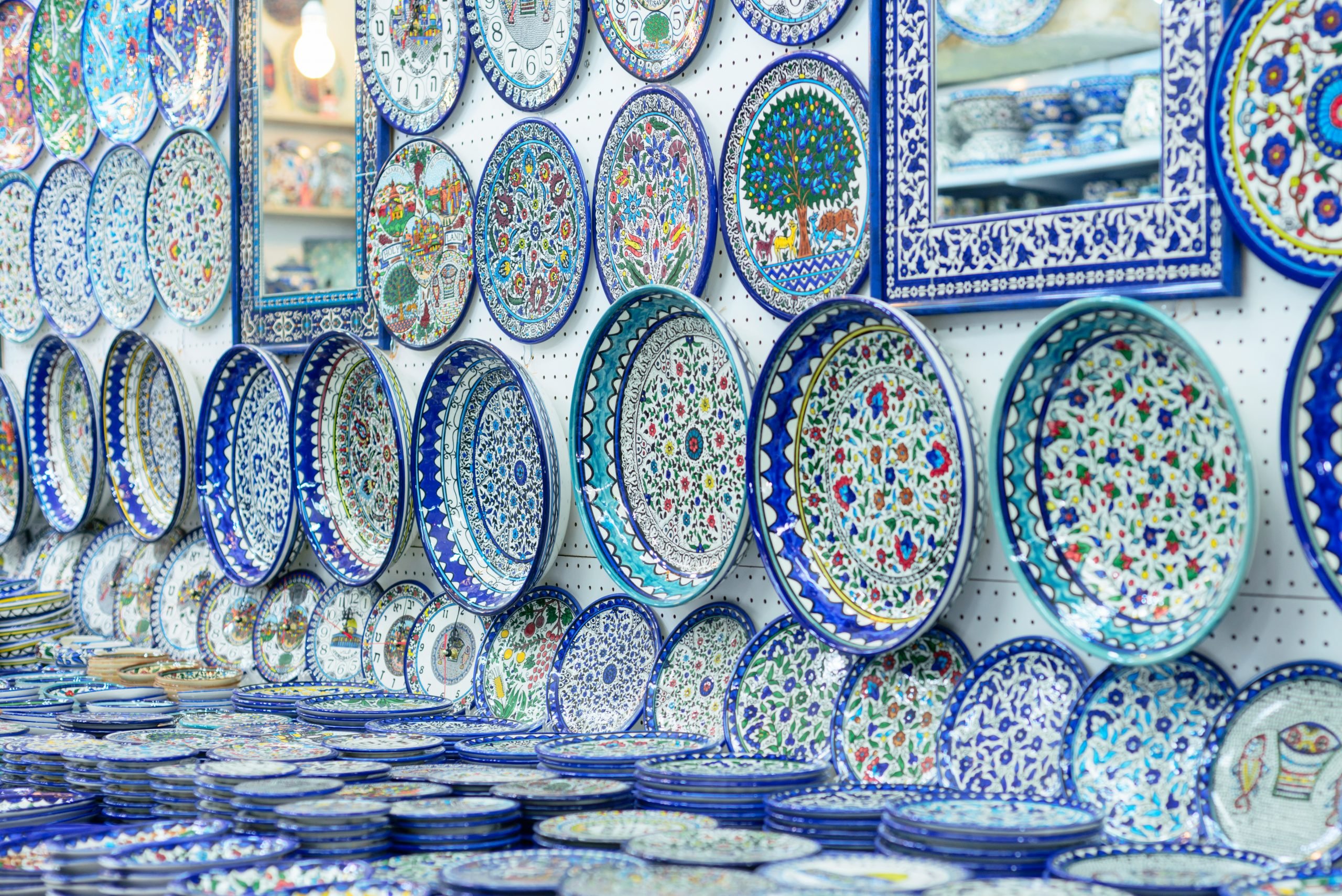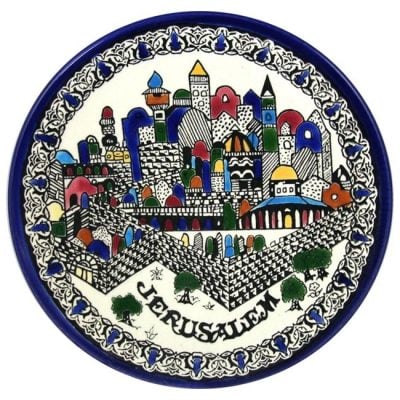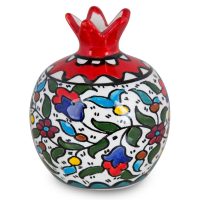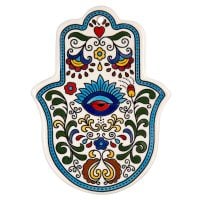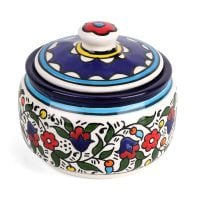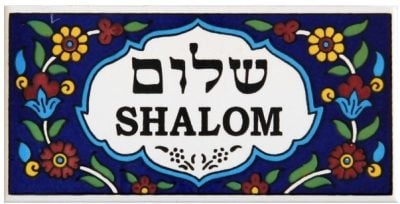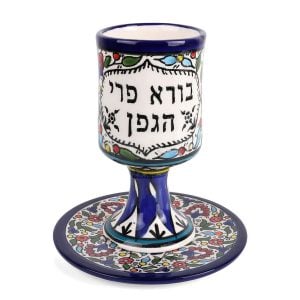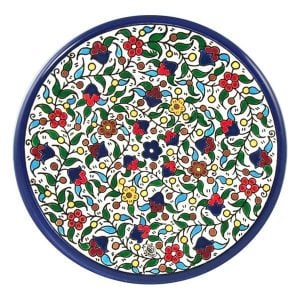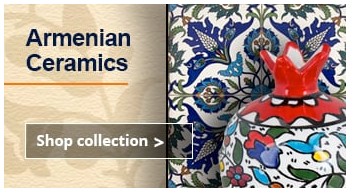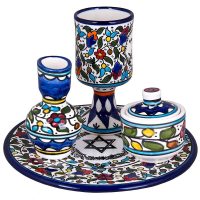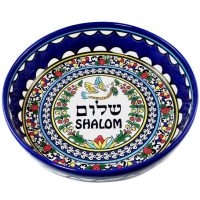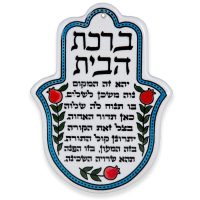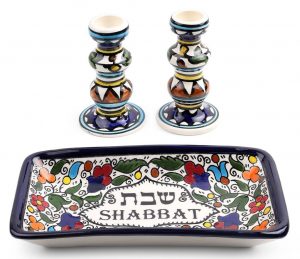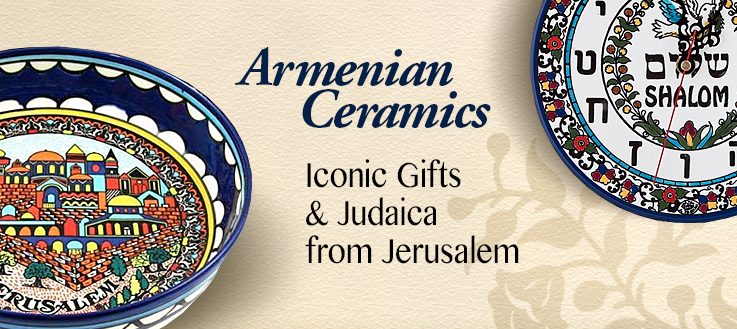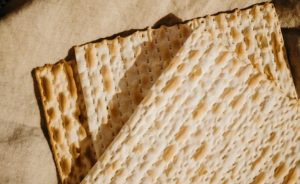The famous floral style of pottery known as Armenian Ceramics has been handcrafted in Jerusalem for generations, and can be found everywhere: on Judaica, tableware, building tiles, and even some street signs.
Despite the name, they’re made right in the Holy City by local artisans. So what’s the Armenian connection, and how did this style become such an integral part of Jerusalem and Israel?
All About Armenian Ceramics
The craft of Armenian ceramics started to become famous when it caught the eye of British dignitaries during the Mandate period, who commissioned the distinct, colorful tiles made by these refugee artisans for their homes and buildings, and even to replace some of the old and broken tiles on the Dome of the Rock.
Since then, Armenian pottery artists have continued and expanded their craft, while remaining in the Holy City of Jerusalem. They have continued to produce captivating ceramic pieces with their iconic blue coloring, floral patterns, and Jerusalem-themed designs – from tiles to tableware, home decor, and even religious items.
Local Armenian artisans have also been commissioned by the city of Jerusalem to produce their famous tiles for street signs in the Old City district, and to decorate famous buildings like the House of the President and the American Colony Hotel. The craft was even featured in a special exhibition by the Israel Museum.
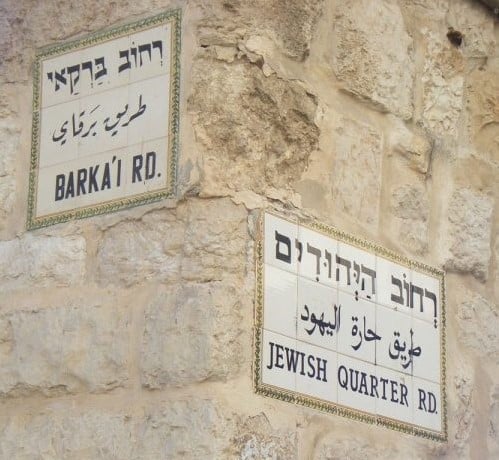
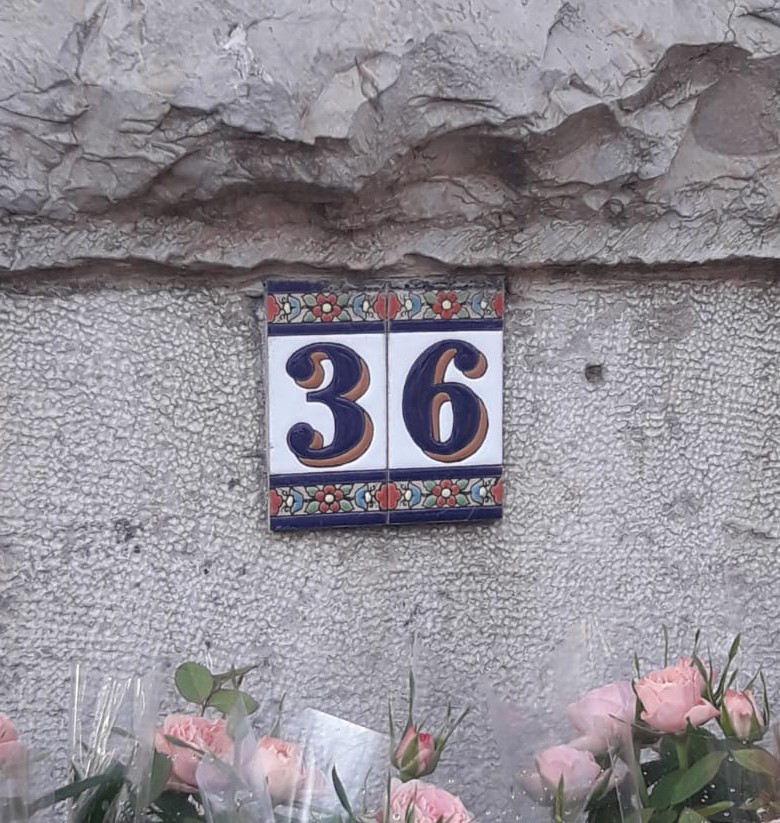
The Armenian community is Christian, but its members produce beautifully decorated and lovingly handcrafted religious items for all of Jerusalem’s three major faiths: Judaism, Christianity, and Islam. The art of Armenian ceramics has become particularly beloved by Israel’s Jewish community for Judaica items and Jewish-themed art.
The craft of Armenian ceramics is today one of the most iconic and well-known styles for Jerusalem-made Judaica – found in Jewish homes all over Israel and the diaspora on shabbat candlesticks, kiddush cups, Passover Seder plates, home blessings, and more.
Jerusalem’s Armenian community and its iconic Armenian ceramics are a symbol of the city’s diversity and unity as well as its distinct beauty and art, lovingly maintained by a proud immigrant community that has become an integral part of the fabric of the Holy City.
And you too can take home a piece of this iconic Middle Eastern art produced right in Jerusalem!
Our store carries a variety of Armenian ceramics gifts and Judaica from local artisans who are continuing this age-old craft till this day – shop here, or check out our Top 10 list here to find your perfect Armenian ceramics gift!
Take home your own piece of the Holy City’s iconic craft, with our top 10 gorgeous Armenian ceramics gifts and Judaica!
